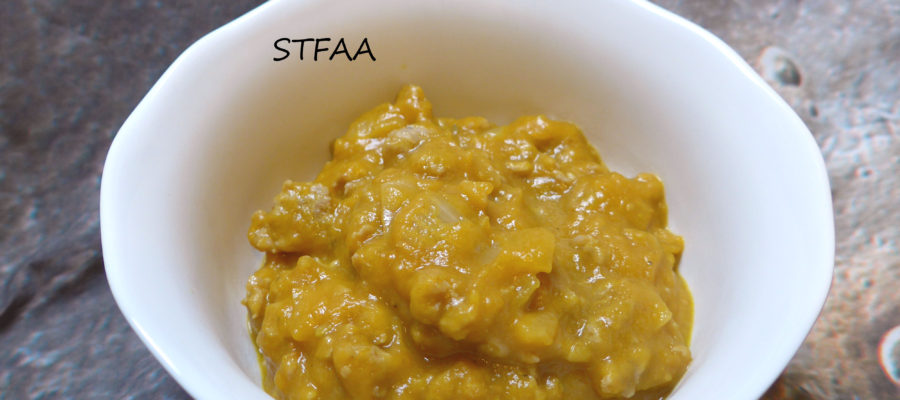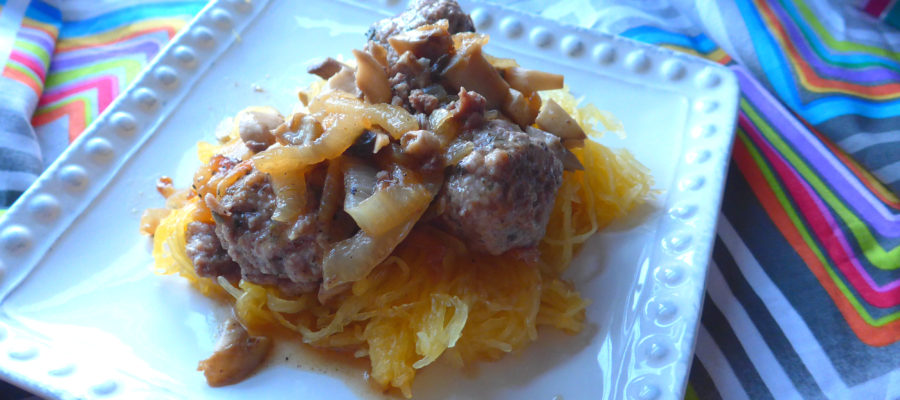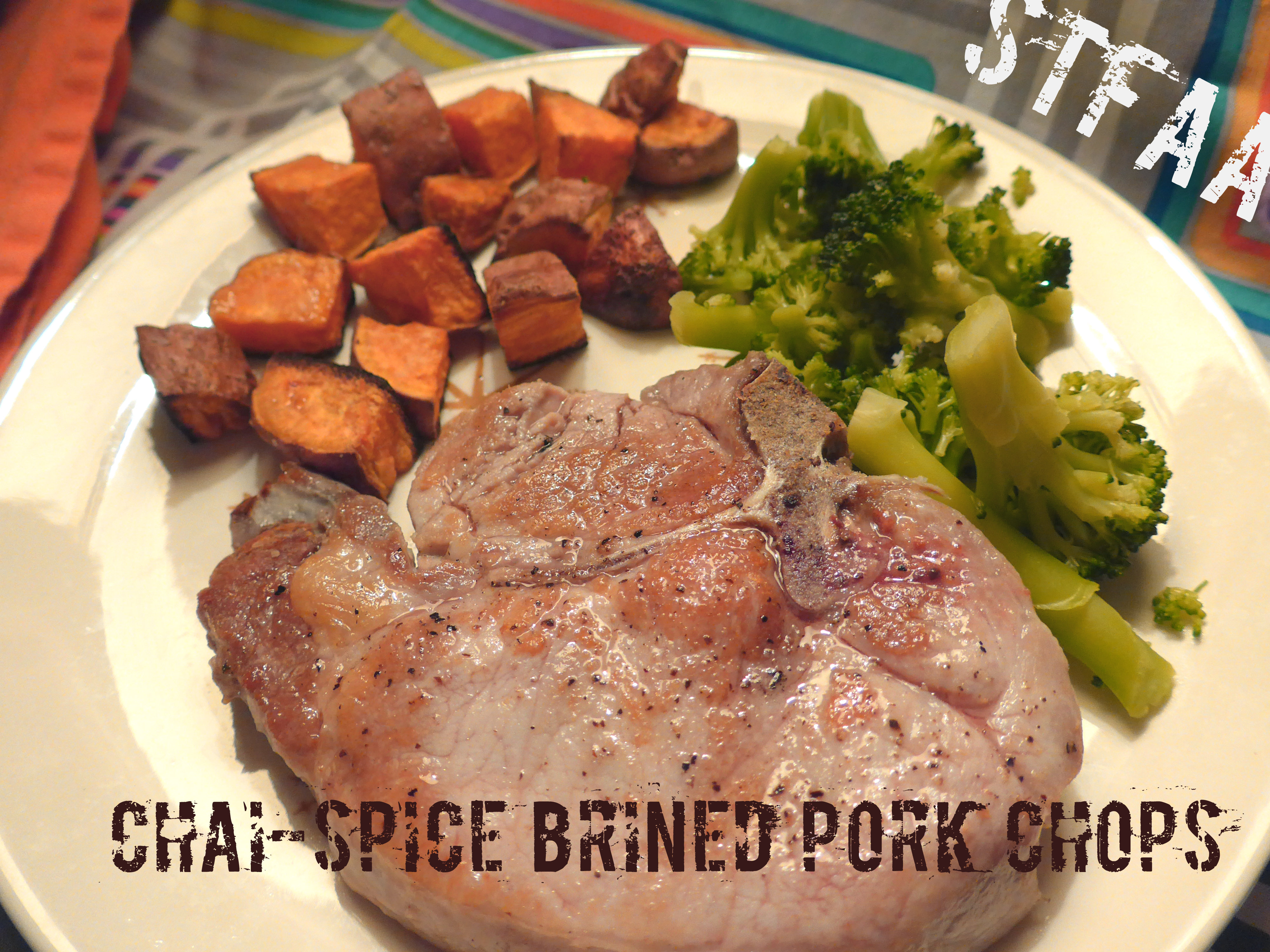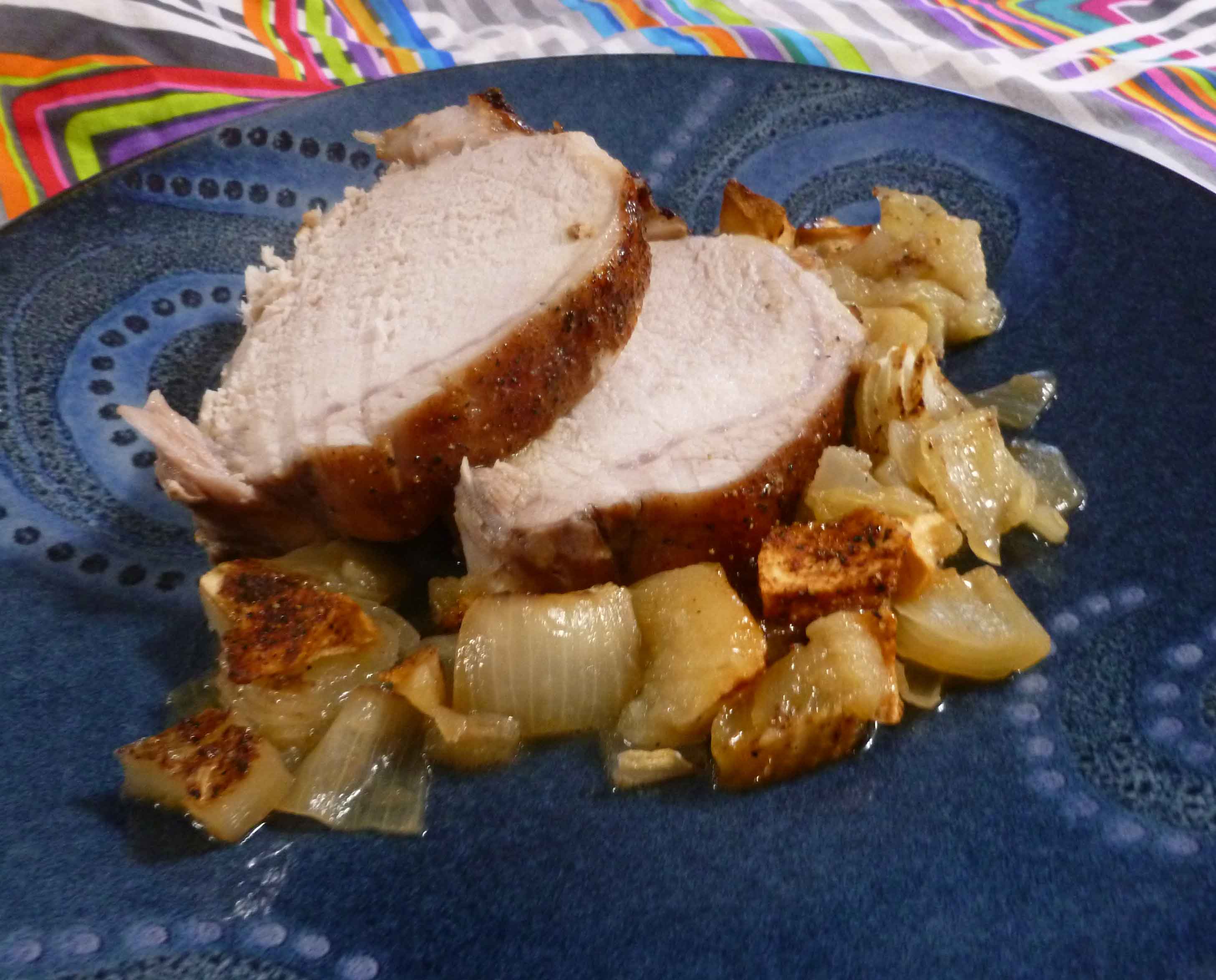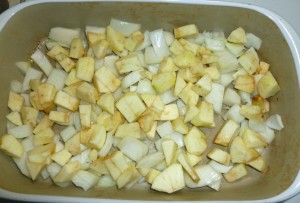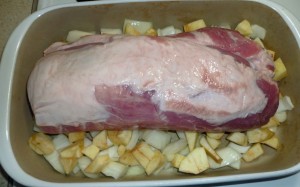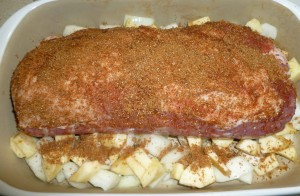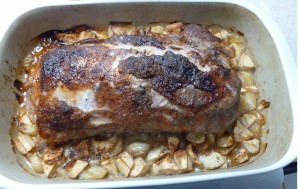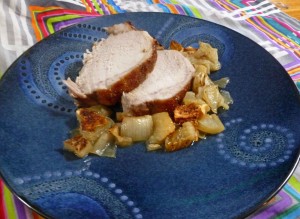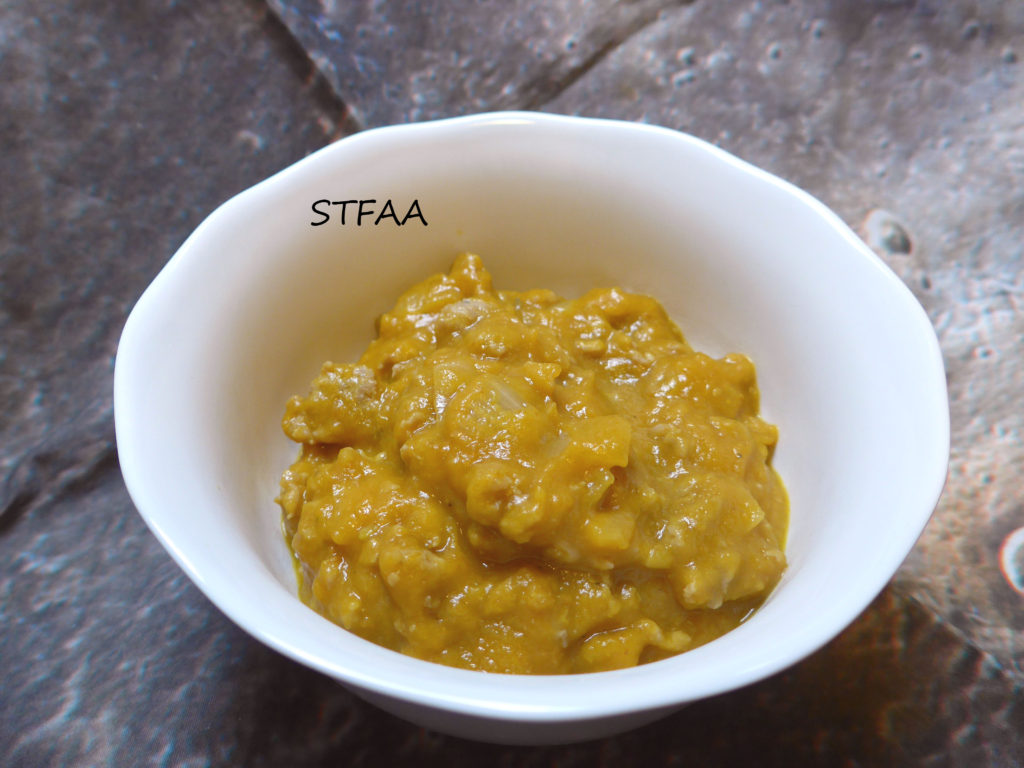
So, for me, the key to quick weeknight meals lies in advance prep, whether it be making basic ingredients ahead of time (like soup stocks) or finding staples that are safe for me. Because my allergies are pretty basic and don’t include corn (and soy is something I’m mildly reactive to), I can use most canned ingredients. Not canned foods, but ingredients like beans and tomatoes and pumpkin are safe for me. This makes weeknight meals a little easier for me. Denise has to can everything from scratch.
For this quick meal, I used 5 ingredients I almost always have on hand: onion (often pre-chopped and frozen for quick use later), olive oil, sausage from a local market that makes a great flavorful one (I try to keep one pound in the freezer), canned pumpkin, and chicken or veggie stock — I always have one of these on hand.
I’ve sauteed the onion and sausage, left the bit of fat in the pan (it is about a tablespoon or so for this brand — if it’s really greasy, maybe drain it — and then used the pumpkin and stock to make thick creamy sauce with no cream. This would be great on pasta, grains, or over veggie noodles of whatever sort tickle your fancy. Plus, it’s 5 ingredients and only 15-20 minutes to cook. I really like the pumpkin in this because it gives the sauce a rich texture, creamy and filling.
Notice: Trying to access array offset on value of type bool in /home/maryzahc/public_html/adultfoodallergies.com/wp-content/plugins/wp-ultimate-recipe/helpers/models/recipe.php on line 254
- 1-2 teaspoons olive oil (or whatever your favorite oil is)
- 1/2 cup chopped onion
- 1 lb sausage We use a local pork sausage that is safe for me, but choose your favorite safe brand or your own recipe
- 1 can pumpkin puree NOT pie filling. This should just be pumpkin, 15 oz of it.
- 1 cup chicken or vegetable stock
- 4 servings cooked grains or pasta
- In a cast iron skillet over medium-low heat, add the onions and 1 teaspoon of olive oil. Stir. If the onions are not all coated with olive oil, add up to another teaspoon. Because the sausage will have its own fat, you want to use the minimum amount of oil here.
- Add the sausage and stir as it cooks until it breaks up. Cook until there is no more pink to it.
- Add the pumpkin and smash it in a little. Then start adding the chicken or vegetable stock and stirring until you have a good consistency. If you need to add more or less than called for, do it. Get a good thick sauce, and then simmer it for about five minutes. Taste and add seasoning if needed.
- Serve over cooked pasta or grains. Or spaghetti squash, zucchini noodles, whatever floats your boat.
